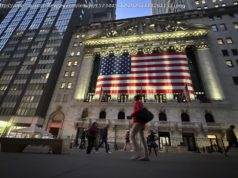Big banks are sending mixed signals.
America’s biggest banks have all now released their financial results for the past year, data that reflect the strange economic situation facing President Biden and his new administration. Parts of the economy are booming, others are at a standstill and the outlook is extraordinarily uncertain. Wall Street’s core business is booming. Goldman Sachs’s trading operation reported its highest annual revenue in a decade, a factor that helped the bank more than double its fourth-quarter profit. JPMorgan Chase and Morgan Stanley also reported big jumps in their investment banking and trading units after a huge year for bond issues, I.P.O.s and M.&A. deals. It’s a different story for Main Street. Other banks with big consumer-lending arms didn’t fare as well, with Bank of America, Citigroup and Wells Fargo lagging in terms of profit growth. The low interest rates that prompted companies to raise debt have hurt banks’ net interest income on consumer loans, which fell year-on-year for most lenders in their latest results. It could be worse. In the fourth quarter, JPMorgan released nearly $3 billion worth of reserves that it had built up to guard against loan defaults, while Bank of America, Citigroup and Wells Fargo released a combined $2 billion in the same period. Over the course of the full year, those four banks still added around $50 billion to their provisions against credit losses, a sign that they remain on guard against a potential wave of defaults. In the meantime, loan demand is low and deposits are piling up. What to do with all that cash? “We have so much capital, we cannot use it,” Jamie Dimon of JPMorgan quipped to investors. The bank’s cash pile has doubled over the past year, to more than $500 billion. It’s a similar story at other banks, and now that they’ve been cleared by regulators to resume share buybacks, “we’re going to be aggressively buying back, and consistently,” said James Gorman, Morgan Stanley’s C.E.O. Analysts polled by FactSet expect the six largest banks to buy back nearly $70 billion in shares this year, up from $18 billion last year. Cautious optimism. Although few bank bosses appear to think that Wall Street-focused businesses will perform as well this year, worries about Main Street units seem less acute than last year. Taken together, you get what Jane Fraser, Citi’s incoming C.E.O., told investors on an earnings call: “While we hope the end is in sight, this virus has surprised us and taught us the folly of best-laid plans, so we will remain vigilant and adaptable.” A grim pandemic anniversary. One year ago, the C.D.C. confirmed the first Covid-19 case in the U.S., the beginning of an outbreak that has led to more than 400,000 deaths in the country. A prominent investor warns of “vanished” risk. Baupost’s Seth Klarman, whose letters to clients are widely read around Wall Street, criticized Fed policies like persistently low interest rates, arguing that they mask the true health of the U.






